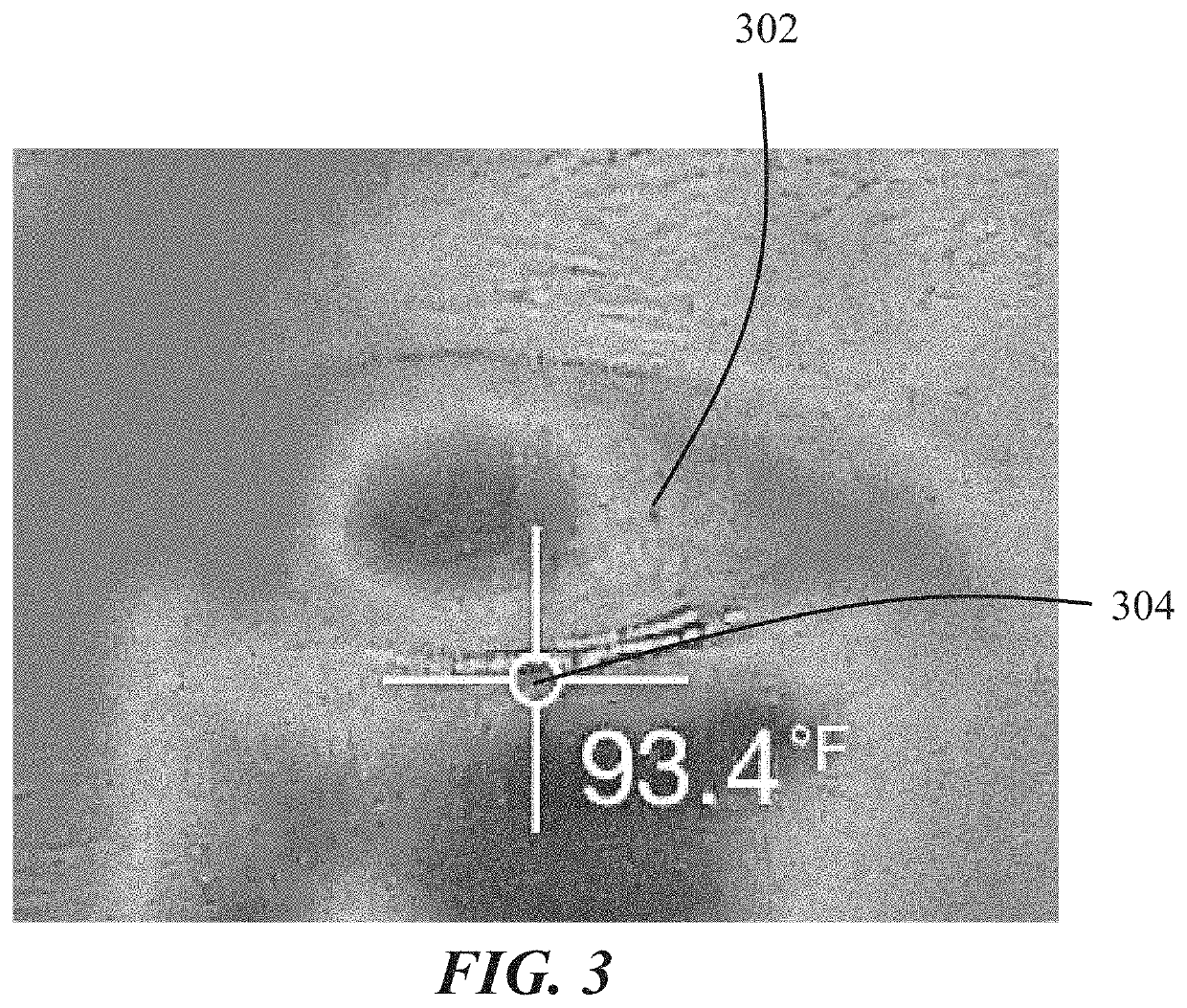Intranasal stimulation for treatment of meibomian gland disease and blepharitis
a meibomian gland and intranasal stimulation technology, applied in the field of intranasal stimulation for the treatment/or blepharitis, can solve the problems of increased risk of meibomian gland disease/dysfunction, increased tear evaporation, hyperocularity of tears, etc., to improve the secreted meibum quality and improve the effect of secreted meibum quality
- Summary
- Abstract
- Description
- Claims
- Application Information
AI Technical Summary
Benefits of technology
Problems solved by technology
Method used
Image
Examples
example # 1
Example #1
Acute Meibum Secretion
[0096]A study was conducted to evaluate the effect of intranasal stimulation on meibum secretion in subjects with dry eye disease (DED) by visual assessment of various measures of meibomian gland function and assessment of tear meniscus height and tear meniscus area.
[0097]Twenty-five DED subjects were enrolled. Subjects were selected to have a baseline Ocular Surface Disease Index score of at least 13, with no more than three responses of “not applicable”; in at least one eye, a baseline Schirmer's test with anesthetic of less than or equal to 10 mm over 5 minutes, and in the same eye, a Schirmer's test that was at least 7 mm higher with cotton swab nasal stimulation; in at least one eye, a lower eyelid margin meibum quality global assessment score of greater than or equal to 1 and not non-expressible, where the score was based on the summed score for each of eight glands in the central third of the lower lid, where each gland was given a score of 0-3...
example # 2
Example #2
Meibomian Gland Morphology
[0105]A study was conducted explore the effect of intranasal stimulation on meibomian gland morphology. Anterior segment optical coherence tomography (AS-OCT) meibography was performed on the lower eyelids of each of twelve dry eye subjects before and after three minutes of intranasal stimulation. Intranasal stimulation was delivered using a handheld stimulator similar to the stimulator 400 shown in FIGS. 4A-4E and described in more detail with respect to Example #1. The area and perimeter of selected meibomian glands were quantified, and the effect of intranasal stimulation on meibomian glands was determined by morphological changes after stimulation. Within the selected images, three to four glands were analyzed. Central meibomian glands clearly shown in both sets of AS-OCT images were selected for analysis, according to the accuracy and quality of the image, and the same meibomian glands were selected before and after stimulation. The area and ...
example # 3
Example #3
Tear Composition
[0107]A study was conducted on subjects with dry eye disease to evaluate acute tear production and the relative concentration of total lipid in tears collected pre- and post- a single treatment period with intranasal stimulation. This study thus indirectly tested for increased meibum secretion after intranasal stimulation, since an increase in acute tear production with a sustained or increased concentration of lipids indicates increased absolute meibum secretion.
[0108]Subjects were selected to have a baseline Ocular Surface Disease Index score of at least 13, with no more than three responses of “not applicable”; and in at least one eye, a baseline Schirmer's test with anesthetic of less than or equal to 10 mm over 5 minutes, and in the same eye, a Schirmer's test that was at least 7 mm higher with cotton swab nasal stimulation. Fifty-five subjects were enrolled in the study, and forty-one subjects (26 females and 15 males; mean age of 61.6±15.9 years (26 ...
PUM
 Login to View More
Login to View More Abstract
Description
Claims
Application Information
 Login to View More
Login to View More - R&D
- Intellectual Property
- Life Sciences
- Materials
- Tech Scout
- Unparalleled Data Quality
- Higher Quality Content
- 60% Fewer Hallucinations
Browse by: Latest US Patents, China's latest patents, Technical Efficacy Thesaurus, Application Domain, Technology Topic, Popular Technical Reports.
© 2025 PatSnap. All rights reserved.Legal|Privacy policy|Modern Slavery Act Transparency Statement|Sitemap|About US| Contact US: help@patsnap.com



